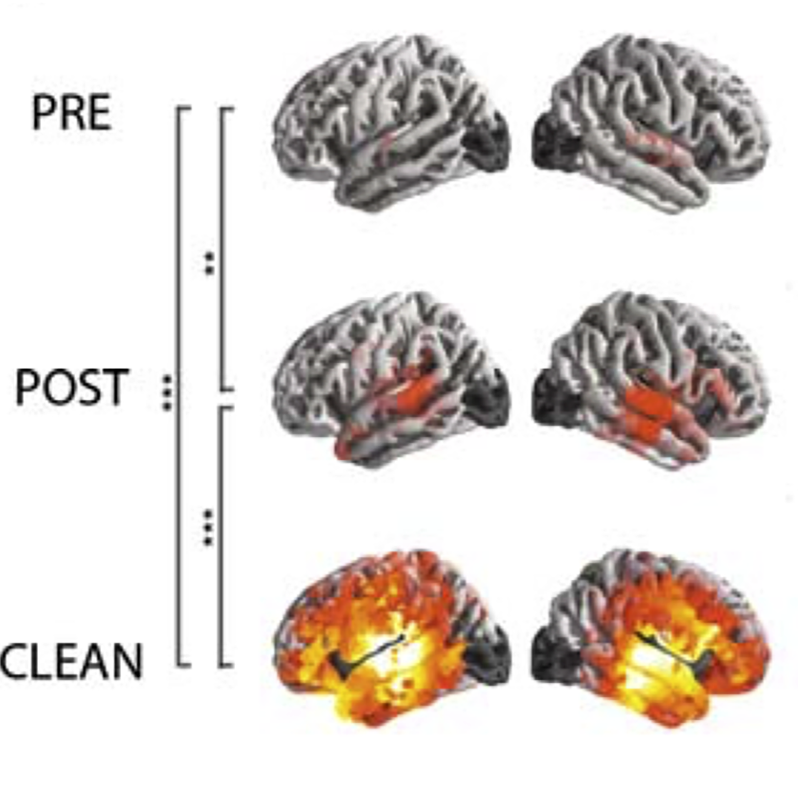News Story
Food safety, energy storage & video authentication innovations honored at UMD's Annual Invention of the Year Awards
COLLEGE PARK, Md. – A new method for quickly detecting bacteria in complex food samples, a revolutionary, high energy density nanopore battery, and a new technique for verifying the source of video streams are the three winners of the annual University of Maryland Invention of the Year Awards.
The Invention of the Year Award winners were announced at the university’s Celebration of Innovation and Partnerships event on April 29, attended by more than 200 guests gathered at the University House on the College Park campus. Also announced at the event were the winners of the Corporate Connector of the Year Awards, which were received by mechanical engineering professor Reinhard Radermacher, who is director of the Center for Environmental Energy Engineering, and by the Maryland Industrial Partnerships (MIPS) program, which provides company-matched funding for university research that helps companies develop new products. The award is given each year to an individual or a program in the university who has established partnerships with the private sector in corporate research, philanthropy, and/or student support.
UMD’s Office of Technology Commercialization, part of the Division of Research, received a total of 187 disclosures in 2014. Nine nominees for Invention of the Year were selected based upon their potential impact on science, society, and the open market, and the three winners in the categories of physical sciences, life sciences, and information sciences, were selected by a panel of independent judges.
“We are very proud of the innovations our faculty researchers develop here on our College Park campus,” said Vice President and Chief Research Officer Patrick O’Shea. “The high quality of each year’s finalists demonstrate the strength of our research enterprise and the power of our innovation ecosystem.”
Winner in the Life Sciences category:
A Groundbreaking New Bacteria Detection Method for Testing Complex Food Samples
Another groundbreaking life sciences invention is an apparatus developed by Dr. Javier Atencia-Fernandez, research assistant professor at the Fischell Department of Bioengineering. The device can cause bacteria present in food to actually self-separate so that researchers and users in independent labs that perform food safety tests for the food industry can rapidly detect pathogens in food samples. It only takes the device 30 minutes to extract 75 percent of the bacteria in a food sample, and 2 hours and 30 minutes to extract 99 percent. By comparison, existing processes take 12 to 36 hours.
Winner in the Physical Sciences category:
A Revolutionary, High Energy Density Nanopore Battery
Dr. Gary Rubloff, professor of materials science and engineering, a part of UMD's Brain and Behavior Initiative and director of the Maryland NanoCenter, Professor of Chemistry and Biochemistry Sang Bok Lee, and their research team invented a nanopore battery with high energy density and excellent capacity retention. The battery is made of nanotubular electrodes and an electrolyte, all confined in an anodic aluminum oxide nanopore. It is an all-in-one device and shows promise for higher energy availability for a given power density due to larger surface area and shorter transport time for the ions in the electrode material. It signifies the potential that nanostructure design has for high power electrochemical storage.
Winner in the Information Sciences Category:
Verifying the Source of Video Streams Using Electric Network Frequency (ENF) Signals
This nomination is a novel technique to measure Electric Network Frequency (ENF) signals by exploiting the rolling shutter mechanism in a modern Complementary Metal-Oxide-Semiconductor or CMOS-based camera. The technology, developed by Dr. Min Wu, professor in the Department of Electrical and Computer Engineering, the University of Maryland Institute for Advanced Computer Studies, and the Institute for Systems Research, along with her research team, enables the source verification of a video stream by extracting the ENF signals using a camera that views objects lit with incandescent or fluorescent lighting with a rolling shutter.
Published April 30, 2015










